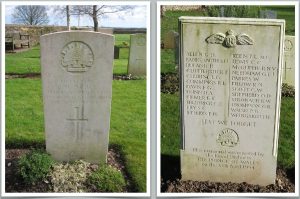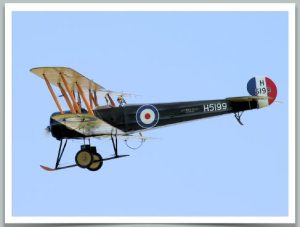8th Battalion, Australian Infantry

The 28 August 1918 was a black day for Minchinhampton Aerodrome, as three of its pilots were killed in one accident.
Charles William Scott was born in March 1894, at Malvern, Victoria. He was the son of John McAdam and Agnes Augusta Scott, of Kent Street, Ascot Vale, Victoria: in later years, when a widow, Agnes lived at 72 Argyll Street, Moree Ponds, Victoria.
Charles left his position as a municipal clerk to enlist at Melbourne on 8 January 1916 aged 21 years and 10 months. He had had some previous military training, having spent a year as a Cadet and four in the Militia.
He was given the rank of Private and the number 5198 and posted to the 3rd Battalion of the Australian Infantry, 16th Reinforcements.
After initial training at Royal Park and Castlemain, on 1 April 1916 he left Melbourne on HMAT Suffolk (A23) and arrived at Suez on 11 May, going into further training at the large ANZAC Egyptian base at Tel-el-Kabir.
He was then posted to 58th Battalion, Australian Infantry.
On 21 June 1916 he sailed from Alexandria on the troopship Ivernia bound for Marseilles arriving on 30 June, then proceeding by train to the Western Front.
The first stop was at the vast British Expeditionary Forces (BEF) training camp at Etaples and then he was sent on attachment to 15th Brigade HQ.
He returned from the attachment on 29 December 1916 and was promoted to Corporal.
Charles Scott was clearly earmarked as ‘officer material’ as, on 3 January 1917, and he joined No 6 Officers’ Cadet battalion at Balliol College, Oxford and was commissioned as a Second Lieutenant on 27 April 1917.
He was posted to the Australian Imperial Force (AIF) base at Tidworth, Wiltshire, prior to a posting to France in May 1917, re-joining the 58th Battalion in the field on the 17th.
Promotion to Lieutenant followed on 7 September and on 3 January 1918 he was then sent on a Signals Officer’s Course at the Signals School of Instruction. The AIF was now looking to form the Australian Flying Corps (AFC) and was looking for personnel.
Charles was sent on detached duty from 58th Battalion on 7 June to the No 1 School of Military Aeronautics at Reading to train as a pilot.
He qualified and a posting to 5th Training Squadron, AFC, based at Minchinhampton Aerodrome (later known as Aston Down) came shortly into August 1918.
By 28 August Lieutenant Scott had logged seven hours 20 mins flying time in an Avro 504k trainer, under dual control and one hour 25 mins, solo.
On 28 August 1918, at around 7.25am, in an Avro 504K (serial number D9282), he was in the air over Minchinhampton aerodrome, receiving instruction from Lieutenant Roy Lytton Cummings who was an experienced pilot and instructor.
The weather was fair and visibility good. Also in the air, flying solo in an Avro 504 D6, was Corporal Cadet Ernest Howard Jefferys, of 6th Training Squadron, who had been ordered to put in 30 minutes practice in vertical turns over the airfield.
At a height of between 1000-1500 feet the two aircraft were flying at right angles to one another, Jefferys heading north east and Cummings and Scott south east. Jeffreys aircraft turned left and its right wing collided with the right wing of the other machine: both aircraft fell to earth killing all occupants instantly.
Cummings and Scott’s aircraft fell to earth at Lowesmore Farm (in the parish of Sapperton).
Scott was found to have sustained a fractured skull; he was 24 years of age.
The burials of Scott, Cummings and Jeffery were held jointly on 31 August 1918 all with military honours and they now lie in Leighterton Church Cemetery with their graves marked by CWGC headstones.
Research by Graham Adams 18 January 2018

Avro 504K – part of the Shuttleworth Collection
